#Northwest New Mexico
Explore tagged Tumblr posts
Text


Bramble and Brass-Conchas Lake State Park
#places you should see before the world ends#photography#scenic route#artists on tumblr#new mexico#desert#travel#hiking#mountain#northwest new mexico#rocks#plants#shrub#art#reflection#adventure#explore our parks#explore#nature#wild#wild west#conchas lake state park
79 notes
·
View notes
Text

Located on land belonging to the Forest Service, is a pueblo ruin built in the Rosa style between 1000 and 1300. It is believed to be one of the last remnants of the Gallina people. This group, while lending its name to a nearby village and several physical landforms, does not have any living members to tell its story.
29 notes
·
View notes
Text
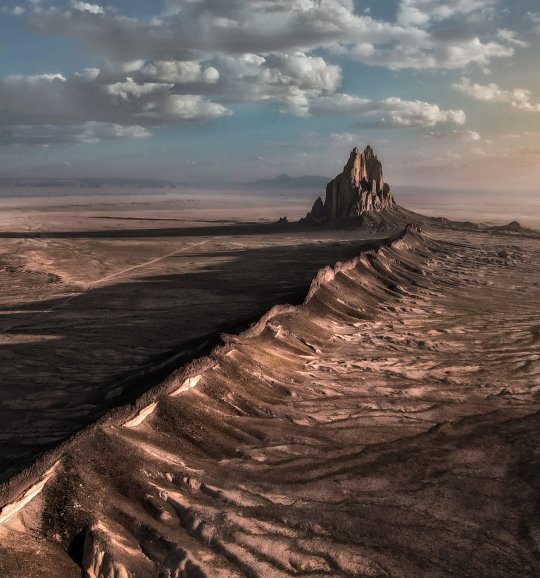
By Ken James: When real life becomes otherworldly. Photography is interesting in the sense that you're an artist that captures and documents the mind-blowing work of God, who obviously is an artist who loves to his work show off.
It's Northwest NM near the four corners...
📸 @Openshutter21
#Ken James#@Openshutter21#Amazing#Beautiful#Nature#Travel#Landscape#Artist#Photography#Northwest NM#Northwest New Mexico
27 notes
·
View notes
Text

Purple: Most gothic state by region. Pink: runner-up by region
You, the people, voted for the most gothic state in each region of the United States, and the results are in!
But which state is the most gothic in the country? Vote now (and let us know why!)
If you have lived in or visited, comment or tag your favorite gothic destinations!
#the runners up wouldn't fit so the poll is just the top states in each category#gothic#gothgoth#goth#travel#new england#mid-atlantic#southeast#midwest#southwest#pacific northwest#pnw#pacific#west coast#west#maine#pennsylvania#louisiana#virginia#illinois#new mexico#washington#wyoming#united states#us#america#united states of america#thegothictraelguide#the gothic travel guide#gothictravelguide
4 notes
·
View notes
Text
I just improvised like half of a dnd session and STILL managed to get the plot going where I need it to, in a COMPLETELY different way than I thought I was going to get that information, got the party to COMMUNICATE with each other, and introduced a BOOKSTORE GHOST WITH A CAT WHO MADE A DEAL WITH A PLAYER THAT SHE WOULD COME BACK AND TELL HER THE REST OF HER STORY bc they’re in an apocalypse so there are no more books to read and aaaaa
Now I get to design a mini dungeon for the players to steal a car from the neighborhood dealership that has been turned into a home base for the gang of republican dads who are also trying to survive this zombie apocalypse
#I get to flesh out the Waffle House secret society even more because of a 24 persuasion check#and I get to use the random encounters I’ve been saving up for the road trip they’re finally going on!! to north New Mexico and beyond!!!#I realize this campaign makes absolutely no sense to anyone who doesn’t already know what’s going on and I love it#AND in my panic I still managed to get the party moving northwest; which is EXACTLY where I need them to go for Plot Stuff (if ur in the-#campaign and ur reading this ignore it) hfgdghf#dnd#waffle texas failures#dungeons and dragons#dnd dm#dnd campaign#d&d
39 notes
·
View notes
Text

An AI-Generated Representation Of Each Of The 50 States in the USA (Continued)
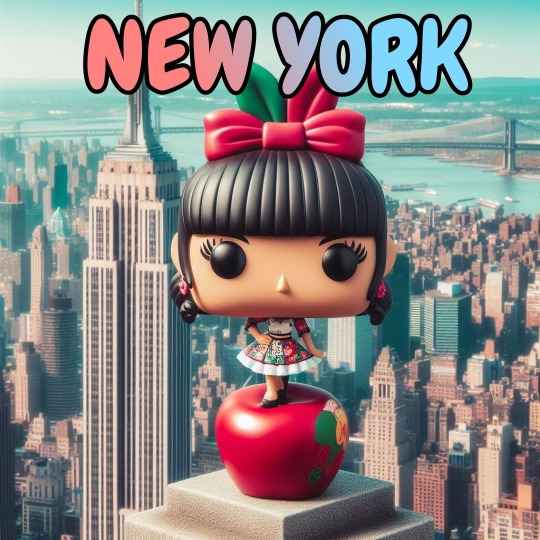






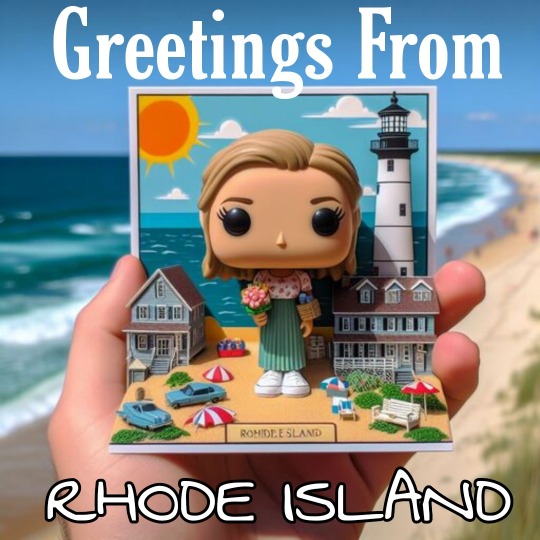

#new mexico#new york#the big apple#desert#southwest#north carolina#north dakota#ohio#oklahoma#oregon#Pennsylvania#rhode island#South Carolina#south#northwest#northeast#United States#funko#funko pop#fun#states#postcard#travel#travel blog
3 notes
·
View notes
Text
A new one bed flats apartments for rent in an estate modern house with pop ceiling for working class persons cute sharp 1bdrm home available now at Nta road in port Harcourt city rivers state Nigeria.
#rivers state#abuja#vietnam#wike#bangladesh#nysc#lagos#nigeria#youtube#portharcourt#north korea#north carolina#pacific northwest#north america#south#attacks#atlas#laos#nuclear#northern lights#arizona#idaho#utah#new mexico#colorado#southwest
1 note
·
View note
Text
some of my faves from 2023 :)





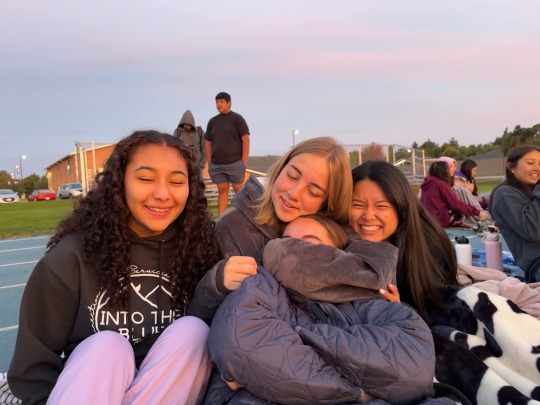
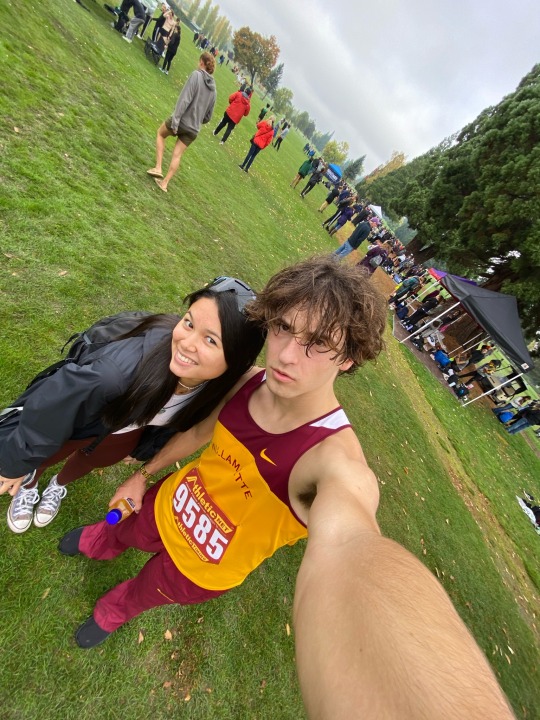
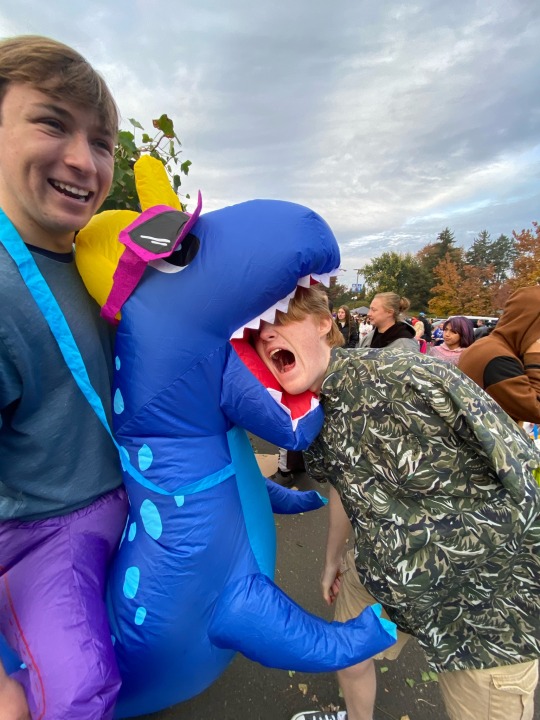
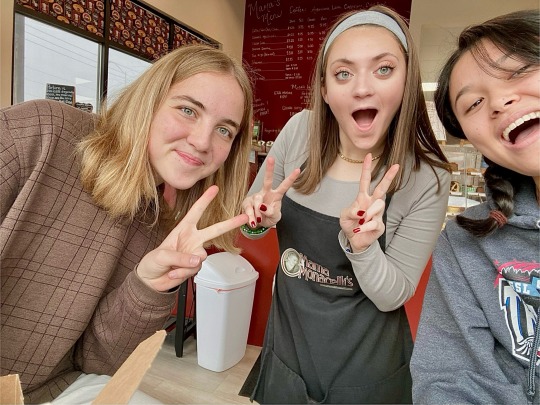
ups, downs, all arounds. the end of junior year brought tears but the beginning of senior year brought just as many smiles.
#washington#friends#pacific northwest#blue devils#family#east coast#2023#new york#track and field#homies#2023 recap#faves#memories#new year#cam :#stelly#keegs#whit whit#oregon#madeeeeee#kae♡#j hugs#zechy!#bbg finn#お兄さん#homie jeff haha#liam?#happy adoption day to mexico turtle! 365 days w mom (he misses his boat brother almost as much as i do)
0 notes
Text

Ceramic bowl with a fishy, Mobollon-Mimbres culture, Arizona, New Mexico, or northwest Mexico, circa 1000 - 1150 AD
from The Dallas Museum of Art
188 notes
·
View notes
Text
Also preserved on our archive (Daily updates!)
An older (published in January 2024) but interesting and comprehensive look at long Covid's effect on Latino families and communities in the US.
By Lygia Navarro and Johanna Bejarano
Editor’s note: This story first appeared on palabra, the digital news site by the National Association of Hispanic Journalists. It is part of a series produced in partnership between palabra and Northwest Public Broadcasting (NWPB) with the collaboration of reporters Lygia Navarro and Johanna Bejarano. *Some people interviewed for this article requested anonymity to discuss private health issues.
Victoria* is already exhausted, and her story hasn’t even begun. It’s late January 2021 in rural Sunnyside, Washington. The town of 16,000 people is a sleepy handful of blocks flecked with pickup trocas, churches on nearly every corner, and the twangs of Clint Black and Vicente Fernández. Geometric emerald chunks of farmland encircle the town.
Thirty-nine-year-old Victoria drags herself back and forth to her parents’ bedroom in a uniform of baggy burgundy sweatpants, scarf, knit hat and mask. Always a mask. As the eldest sibling, her unspoken job is to protect the family. But COVID-19 hits before they can get vaccinated.
When Victoria’s mamá got sick and quickly infected her papá, Victoria quarantined them. She shut them in their room, only cracking the door briefly to slide food in before retreating in a fog of Lysol.
Working in the health field, Victoria knows if they make it through the first 14 days without hospitalization, they will likely survive. Yet, caregiving drains her: Keeping track of fevers. Checking oxygen saturation. Making sure they’re drinking Pedialyte to stay hydrated. Worrying whether they will live or die.
Five days in, COVID comes for Victoria. Hard. Later, when she repeatedly scrutinizes these events, Victoria will wonder if it was the stress that caused it all — and changed her life forever.
At the pandemic’s onset, Victoria’s family’s work dynamics fit the standard in Sunnyside, where 86% of residents are Latino. “Keeping the members of your household safe — it was hard for a lot of families,” Victoria says. Living in multigenerational homes, many adult children, who’d grown up in the United States with access to education, had professional jobs, and switched to working from home. Their immigrant elders, who’d often only been able to finish fourth grade, braved the world to toil in fields, produce packing plants, supermarkets, or delivery trucks. As Leydy Rangel of the UFW Foundation puts it: “You can’t harvest food through Zoom.”
More than three decades ago, when 6-year-old Victoria’s family migrated from rural northern Mexico to this fertile slip of land cradling the zigzagging Yakima River, their futures promised only prosperity and opportunity.
According to oral histories of the Confederated Tribes and Bands of the Yakama Nation — who white colonizers forced out of the Yakima Valley in 1855 — the valley’s fecund lands have fed humans since time immemorial. Soon after the Yakamas’ removal to a nearby reservation, settler agriculture exploded.
By World War II, employers were frantic to hire contracted bracero laborers from Mexico — themselves descendants of Indigenous ancestors — to harvest the valley’s bounty of asparagus, pears, cherries and other cornucopia. This was how Victoria’s family arrived here: her abuelo and his brother had traveled back and forth to Washington as braceros decades before.
Victoria’s path took similar twists, in a 21st century, first-gen way. She moved all over the country for her education and jobs, then returned before the pandemic, bringing a newfound appreciation for the taste of apples freshly plucked from a tree that morning, and for the ambrosial scent of mint and grapes permeating the valley before harvest.
Today, agriculture is the largest industry fueling the Yakima Valley, the country’s twelfth-largest agriculture production area. Here, 77% of the nation’s hops (an essential ingredient in beer) and 70% of the nation’s apples are grown. Latinos, who constitute more than half of Yakima County’s population, power the agricultural industry.
While the area’s agricultural enterprises paid out $1.1 billion in wages in 2020, 59% of the low-wage agriculture jobs are held by undocumented folks and contracted foreign seasonal laborers doing work many Americans spurn. Latinos here live on median incomes that are less than half of white residents’, with 16% of Latinos living in poverty. Also in 2020: as they watched co-workers fall ill and die, Latino farmworkers repeatedly went on strike protesting employers’ refusals to provide paid sick leave, hazard pay and basic COVID protections like social distancing, gloves and masks.
“Every aspect of health care is lacking in the valley,” Yakima Herald-Republic health reporter Santiago Ochoa tells me.
In interview after interview, Yakima Valley residents and health care workers sketch in the details of a dire landscape:
The state’s busiest emergency room. Abrupt shutdowns of hospital facilities. Impoverished people without transportation or internet access for telehealth. Eight-month waits for primary care appointments. Nearly one in five Latinos uninsured. More than half of residents receive Medicaid. Resident physicians cycling in and out, never getting to know their patients. Not enough specialists, resulting in day-long trips for specialized care in bigger cities. With its Latino essential workforce risking their lives to feed their families — and the country — by summer 2020, COVID blazed through Yakima County, which quickly became Washington’s most scorching of hot spots. Not only did Yakima County tally the highest per-capita case rate of all West Coast counties (with Latinos making up 67% versus, 26% for white people), it also saw more cases than the entire state of Oregon. Ask Latinos here about 2020, and they shiver and avert their gazes, the trauma and death still too near.
Their positive tests marked just the beginning of terrifying new journeys as COVID slammed Victoria and many other Yakima Valley Latinos. Mix in scanty rural health care, systemic racism and a complicated emerging illness, and what do you get? Chaos: a population hardest hit by long COVID, but massively untreated, underdiagnosed, and undercounted by the government and medicine itself.
It won’t go away The cough was the first clue something wasn’t right. When Victoria had COVID, she’d coughed a bit. But then, three months later, she started and couldn’t stop.
The Yakima Valley is so starved for physicians that it took five months to see a primary care doctor, who attributed Victoria’s incessant cough to allergies. Victoria tried every antihistamine and decongestant available; some brought relief for three, maybe four weeks, and then returned spasms of the dry, gasping bark. A few minutes apart, all day long. The worst was waking up coughing, at least hourly.
Victoria had chest x-rays. An ear, nose and throat specialist offered surgery on her nose’s deviated septum. As months passed, the black hair framing Victoria’s heart-shaped face started aging rapidly, until it was grayer than her mother’s.
Over a year after the cough began, an allergist prescribed allergy drops, and Victoria made a chilling discovery. Once the drops stopped the cough for a month, then two, Victoria realized that the extreme fatigue she’d thought was sleep deprivation from coughing all night persisted.
“The exhaustion comes from within your soul, it overpowers you,” she says. “It’s intolerable.”
And her mind was foggy. When interrupted at work every 10 minutes by a coughing jag, Victoria hadn’t realized COVID had substantially altered her brain. “There are things in my brain that I should have access to, like words, definitions, memories,” she says. “I know that they’re there but I can’t access them. It’s like a filing cabinet, but I can’t open it.”
Before long, the cough resurfaced. Sometime in 2021, reading COVID news for work, Victoria learned of long COVID: new or lingering health issues persisting at least three months after COVID infection.
How to get help if you think you might have long COVID Talk to your doctor, and if your doctor doesn’t listen to your concerns, bring a loved one to advocate for you at your next appointment. Bring this article (or other materials on long COVID) to show your doctor. Ask your doctor about seeing specialists for long COVID symptoms, such as a cardiologist (for dysautonomia symptoms like dizziness, heart palpitations and shortness of breath), a gastroenterologist (for digestive problems), or a neurologist (for chronic nerve pain). Ask to be referred to a long COVID clinic (if there is one in your area). Now four years into the pandemic, there is still no treatment or cure for long COVID. COVID long-haulers (as they call themselves) have reported over 200 varied symptoms, with fatigue, dizziness, heart palpitations, post-exertion exhaustion, gastrointestinal issues, and brain dysfunction among the most common.
Long COVID is far from a mysterious illness, as it’s often called by the medical establishment and some media. There are precedents: for at least a century, historical documentation has shown that, while most recover, some people remain sick after viral or other illnesses. Yet funds for research have been severely limited, and sufferers ignored. Myalgic Encephalomyelitis – sometimes called Chronic Fatigue Syndrome, or ME/CFS — is a prime example. Like ME/CFS, long COVID afflicts many more women (and people assigned female at birth) than men, with women comprising as many as 80% of COVID long-haulers. Most long-haulers are in their 30s, 40s and 50s — the busiest years for women with children, who often put their own needs last.
What should have been instantly clear, given how disproportionately Black and Brown communities were hit by COVID, was that long COVID would wallop Americans of color. Yet, the U.S. government waited until June 2022 to begin tracking long COVID. Even now, with 18 months of data showing Latinos are the population most impacted by long COVID, palabra is among the very few media outlets to report this fact. Are the nation and the medical community willfully ignoring Latino long-haulers — after sending them into clouds of coronavirus to keep society’s privileged safe?
Fighting for a diagnosis When Victoria mentioned long COVID, her doctor didn’t exactly ignore her: she listened, said “OK,” but never engaged on the topic. Same with Victoria’s allergist and the ear, nose and throat specialist. All they could do, the doctors said, was treat her symptoms.
“I’m highly educated and I know that you have to be your own advocate. But I kept asking, kept going on that line of thought, and they had nothing to say to me. Absolutely nothing,” she laments.
Victoria understood science on long COVID was limited, but still expected more. “All of the treatments we tried, it was as if COVID hadn’t existed. They should at least say that we need to investigate more, not continue acting like it wasn’t a factor. That was what was most frustrating.”
Just as Victoria fought to have her illness validated by doctors, 30 miles away in the northern Yakima Valley town of Moxee, 52-year-old María* waged a parallel battle. Both felt utterly alone.
When the pandemic began, María became the protector of her husband and children, all asthmatics. When she fell ill New Year’s Day 2021, she locked herself in her room, emerging weeks later to find her life unrecognizable.
Recounting her struggles, María reads deliberately from notes, holding back tears, then pushes her reading glasses atop her head. (María moved here from northern Mexico as an adult, and feels most comfortable in Spanish.) Her dyed brown hair, gold necklace and lightly made-up face project convivial warmth, but something intangible behind her expression belies a depth of grief María refuses to let escape. When I tell her I also have long COVID, and fell ill the exact same month, she breathes out some of her anxiety.
María’s long COVID includes chronic, full-body pain; memory lapses so severe she sometimes can’t remember if she’s eaten breakfast; such low energy that she’s constantly like a battery out of juice; unending shortness of breath; joint inflammation; and blood flow issues that leave her hands a deep purple. (The only time María ventured to the hospital, for her purple hands, she says staff attempted to clean them, thinking it was paint.) Like Victoria, María used to enjoy exercise and hiking in the valley’s foothills, but can do neither anymore.
María has no insurance, and receives care at the Yakima Valley Farm Workers Clinic, created in 1978 out of the farmworkers’ movement. The clinic’s multiple locations are the valley’s main providers of care irrespective of patients’ ability to pay.
Whereas Victoria’s doctors expressed indifference to the idea of COVID causing her health complaints, María’s doctors not only discounted this connection, but made serious errors of misdiagnosis.
“Every week I went to see my doctor. She got so stressed out (at not knowing what was wrong with me) that she stressed me out,” María says. “My doctor told me, ‘You know what? I think you have multiple sclerosis.’” María saw specialists, and afterwards, even without confirmation, María says her doctor still insisted she had MS. “I told her, ‘No. No, I don’t have multiple sclerosis. It’s COVID. This happened after COVID.’ I was really, really, really, really, really, really insistent on telling them that all of this was after COVID.”
Latinos uncovering the connections between their ill health and COVID is rare, partially due to the plummet in COVID coverage on Spanish-language news, says Monica Verduzco-Gutierrez, a long-hauler and head of the University of Texas Health Science Center San Antonio long COVID clinic. There has been no national public education on long COVID, in any language.
“It’s hard for people to understand what the real impact of long COVID is now and in the future,” says Lilián Bravo, Yakima Health District director of public health partnerships and the face of COVID updates on Yakima Valley television early in the pandemic. “We’re looking at a huge deficit in terms of people’s quality of life and ‘productivity.’”
Eventually, María’s doctor sent her to another specialist, who said that if she didn’t improve within a month, he’d operate on her hip. María’s never had hip problems. “He said, ‘Well, I don’t know what you’re going to do,’” and then put her on a strong steroid medication that made her vomit horribly, María says. She hasn’t tallied what she’s spent on medical bills, but after paying $1,548 for a single test, it must be many thousands of dollars.
Meanwhile, María’s family and friends kept insisting her maladies were psychological. “I never accepted that. I told them: ‘It’s not in my head. It’s in my body.’” It wasn’t until more than a year after becoming ill that María finally saw a rheumatologist who diagnosed her with long COVID and other immune dysfunctions. “I told her, ‘Yes, I knew that my body wasn’t working. I knew that something was wrong.’ I felt like I could relax. Finally someone is telling me that it’s not all in my head.” Once María was diagnosed, her extended family switched to asking how she was feeling and sympathizing with her.
Victoria, on the other hand, has never received a long COVID diagnosis. At Victoria’s request, her doctor referred her to the state’s only long COVID clinic, at the University of Washington in Seattle, but Victoria’s insurance, Kaiser Permanente, refused to pre-approve the visit — and the clinic wouldn’t accept cash from her. At present, the clinic isn’t even accepting patients from the Yakima Valley or any other part of Washington — they are only accepting patients in King County, which includes Seattle.
Victoria’s family hasn’t accepted her health struggles either. “I’d say, ‘I know that you think I’m crazy,’” Victoria says, chuckling, as she often does to lighten her discomfort. “My mom would fight with me: ‘You forgot to do this! Why are you so spacey?’ ‘Mami, it’s not that I forgot. In reality, I completely lost track of it.’” If Victoria is fatigued, her family asks how that’s possible after a full night’s sleep. “I’ve found that I have to defend myself. When I try to explain to people, they hear it as excuses from a lazy person — especially being Latinos.”
Karla Monterroso, a 42-year-old California Latina long-hauler since March 2020 who spent her first year bedbound, says, “(With long COVID), we have to rest in a way that, in our culture, is very difficult to achieve. We really judge exhaustion.” In fact, pushing physically or mentally for work can make long-haulers much sicker. Karla says Latino ethics of hard work like those of Victoria’s parents “aren’t the principles that are going to serve us with this illness.”
Long COVID diagnoses in Latinos are still too rare, due to untrained family medicine physicians and medical stereotypes, says Verduzco-Gutierrez. (Doctors might see blood sugar changes, for example, and assume that’s just because of Latinos’ high rates of diabetes, rather than long COVID.) She says “misinformation on long COVID” is rampant, with physicians claiming long COVID is a fad, or misdiagnosing the bone-deep exhaustion as depression. When Verduzco-Gutierrez’s own doctor invited her to speak to their practice, the assembled physicians weren’t aware of basic research, including that the drugs Paxlovid and Metformin can help prevent long COVID if taken at infection. In Washington, physicians must complete training on suicide, which takes 1,200 to 1,300 lives in the state yearly, but there’s no state-wide training on long COVID, which currently affects at least 498,290 Washingtonians.
Cultural skepticism about medicine — and entrenched stigmas about illness and disability — mean Sunnyside conversations about aftereffects don’t mention COVID itself. Victoria’s relatives push traditional herbal remedios, assuming that anyone still sick isn’t doing enough to recover. “(People suffering) feel like they’re complaining too much if they try to talk about it,” Victoria says. Meanwhile, her parents and others in her community avoid doctors out of stubbornness and mistrust, she says, “until they’re bleeding, when they’re super in pain…, when it’s gotten to the worst that they can handle.”
“People in this community use their bodies for work,” Victoria says. “If you’re Latino, you’re a hard worker. Period,” says Bravo. “What’s the opposite of that, if you’re not a hard worker? What are you? People don’t want to say, ‘I came to this country to work and all of a sudden I can’t anymore.’”
Victoria sees this with her parents, who’ve worked since the age of 10. Both have health issues inhibiting their lives since having COVID — her dad can’t take his daily hour-long walks anymore because of heart palpitations and shortness of breath, and her mom began getting headaches and saw her arthritis worsen dramatically — yet neither will admit they have long COVID. Nor will their friends and family. “If they noticed the patterns of what they themselves are saying and what their friends of the same age are suffering after COVID,” Victoria says of her community, “they’d hear that almost everyone is suffering some type of long COVID.”
Long COVID’s deep impact on Latinos The “back to normal” ethos is most obvious in the absence of long COVID messaging while as many as 41 million adults now have — or have recovered from — long COVID nationwide. “The way that we’re talking about the pandemic is delegitimizing some of (long COVID’s) real impacts,” says Bravo of the Yakima Health District.
Even with limited demographic data, statistics show a nationwide reality similar to Victoria’s Sunnyside. Through a recurring survey, the Census Bureau estimates that 36% of Latinos nationally have had long COVID — likely a vast underestimate, given that the survey takes 20 minutes to complete online (Latinos have lower rates of broadband internet), and reaches only a sliver of the U.S. population. Experts like Verduzo-Gutierrez believe that true rates of long COVID in Latinos are higher than any reported statistic. California long-hauler Karla Monterroso agrees: “We are underdiagnosed by a severe amount. I do not believe the numbers.”
This fall, a UC Berkeley study reported that 62% of a group of infected California farmworkers developed long COVID. Weeks later, a survey from the University of Washington’s Latino Center for Health found that, of a sample group of 1,546 Washington Latinos, 41% of those infected became long-haulers. The Washington results may also be an undercount: many long-haulers wouldn’t have the energy or brain clarity to complete the 12-page survey, which was mailed to patients who’d seen their doctor within the prior six months. Meanwhile, many long-haulers stop seeing doctors after tiring of the effort and cost with no answers.
“Our community has not bounced back,” says Angie Hinojos, executive director of Centro Cultural Mexicano, which has distributed $29 million in rent assistance in Washington and hasn’t seen need wane. “That is going to affect our earning potential for generations.” The United Farm Workers’ philanthropic sister organization, the UFW Foundation, says union organizers hear about long COVID, and how it’s keeping people out of work, frequently.
Cultural and linguistic disconnects abound between doctors and Latinos on long COVID symptoms, some of which, like brain fog and fatigue, are nebulous. If doctors lack patient rapport — or don’t speak their language — they’ll miss what patients aren’t sharing about how long COVID changed their lives, work and relationships. That’s if Latinos actually go to the doctor.
“If you’re working in the orchards and your muscles are always sore, it’s just part of the day-to-day reality,” says Jesús Hernández, chief executive officer of Family Health Centers in north-central Washington. “If you’re constantly being exposed to dust and even chemicals in the work environment, it’s easy to just say, ‘Well, that’s just because of this or that,’ and not necessarily be readily willing to consider that this is something as unique as long COVID.”
Even Victoria says if not for the cough, she wouldn’t have sought medical advice for her fatigue. “There are a lot of people out there that are really tired, in a lot of pain and have no idea why. None,” says Karla, who was a nonprofit CEO when she became sick. “I have heard in the last three-and-a-half years the most racist and fatphobic things I have ever heard in my life. Like, ‘Oh, sometimes you got to lay off the beans and rice.’ I have a college education. I’m an executive. I am in the top 10% of wage earners in my community. If this is my experience, what is happening to the rest of my people?”
Conspiracy theories and misinformation As Yakima Valley’s Latino vaccination rates continue dropping, I hear all the COVID conspiracy theories: the vaccine has a chip that’ll track you; the vaccine makes you and your children infertile; COVID tests are rigged to all be positive; that hospitals get paid more for COVID patients. Victoria laughs at the most absurd one she’s heard. Her mom’s explanation for her health problems nearly three years after COVID: the vaccine.
Across the Latino United States, social media algorithms and WhatsApp threads promoting COVID disinformation proliferate. Last summer, Latino Center for Health co-director Dr. Leo Morales did a long COVID community presentation just south of Yakima Valley. The audience’s first question: Are vaccines safe? “This is where we’re still at,” Morales says. “That’ll be a big stumbling block for people…in terms of getting to talking about long COVID.”
One morning in early November, Morales and his team gather in Toppenish at Heritage University, where 69% of students are Latino, to present their survey data. Neither presenters nor attendees wear masks, an essential tool for preventing COVID transmission and long COVID. “The only conversation that I’m having about COVID is in this room,” says María Sigüenza, executive director of the Washington State Commission on Hispanic Affairs.
Yakima Valley health institutions are also ignoring long COVID. Of the two main hospital systems, Astria Health declines interview requests and MultiCare reports that of 325,491 patients seen between January and November 2023, 112 — or 0.03% — were diagnosed with long COVID. The Yakima Valley Farmworkers Clinic, where María’s doctor works, refuses to let me speak to anyone about long COVID, despite providing patient information for the Latino Center for Health’s survey. Their doctors simply aren’t seeing long COVID, the clinic claims. Same with the other main community provider, Yakima Neighborhood Health Services, whose media officer responds to my interview requests with: “It’s not going to happen.”
“I think they’re not asking, they’re not looking,” Verduzco-Gutierrez says. “Do the doctors just…look at your diabetes or your blood pressure, but not ask you, ‘Did your diabetes get worse when you had COVID? Did your blood pressure get worse? Did you not have blood pressure problems before? And now do you get dizzy? Do you get headaches? Do you have pains?’” She believes that many, if not most, Latinos with long COVID aren’t getting care, whom she calls “the ones that we’re missing.”
An uncertain future The outlook for Latinos with long COVID is grim. Cultural stigma and ableism cause now-disabled long-haulers to feel shame. (Ableism is societal prejudice and discrimination against disabled people.) Disability benefits are nearly impossible to get. Long-haulers are losing their homes, jobs and insurance. Latinos’ overrepresentation in sectors that don’t offer sick pay and are heavily physical — cleaning, service, agriculture, construction, manufacturing, homecare and healthcare among them — may automatically put them at higher long COVID risk, given ample anecdotal evidence that pushing through a COVID infection instead of resting can lead to long COVID. Latino care providers will become ill in greater numbers, imperiling the healthcare industry.
But Latinos may not be clear on these factors, says long-hauler Karla Monterroso. “My tío had said…'We must be defective because we get sick more than the white people.’ And I’m like ‘No, tío. We are exposed to the illness more. There’s nothing defective about our bodies.’ I’m afraid for us. It’s just going to be disability after disability after disability. We have to start in our small communities building caring infrastructure so that we can help each other. I am clear: No one is coming to save us. We’ve got to save us.”
Disability justice advocates worry about systems unable to cope with inevitable disabling waves of COVID in the future. “(Latinos) aren’t taking it as serious as they should,” says Mayra Colazo, executive director of Central Washington Disability Resources. “They’re not protecting each other. They’re not protecting themselves.” Karla sees the psychology behind this denial: “I have thought a lot about how much it takes to put yourself in danger every single day. (You have) to say ‘Oh, it’s fine. People are exaggerating,’ or you get that you’re in existential hell all of the time.”
Reinfection brings additional risk of long COVID, research shows, and Verduzco-Gutierrez says, “We still don’t know the impact of what is going to happen with all these reinfections. Is it going to cause more autoimmune disease? Is it going to be causing more dementia? Is it going to be causing more cancer?” She believes that every medical chart should include a COVID history, to guide doctors to look for the right clues.
“If we were to be lucky enough to capture everybody who has long COVID, we would overwhelm our (health) system and not be able to do anything for them,” Victoria says. “What’s the motivation for the medical field, for practitioners to find all those people?” For now, Victoria sees none. “And until that changes, I don’t think we will (properly count Latino long-haulers),” she adds.
Flashes of hope do exist. In September 2023, the federal government granted $5 million each to multiple long COVID clinics, including three with Latino-specific projects. In New York City, Mt. Sinai Hospital will soon open a new long COVID clinic near largely-Latino East Harlem, embedded in a primary care clinic with staff from the community to reach Latino long-haulers. Verduzco-Gutierrez’s San Antonio clinic will teach primary care providers across largely rural, Latino South Texas to conduct 15-minute low-tech long COVID examinations (the protocol for which is still being devised), and will deploy community tools to educate Latinos on long COVID.
Meanwhile, at the University of Washington long COVID clinic, staff are preparing a patient handbook, which will be adapted for Latinos and then translated into Spanish. They will also train primary care physicians to be local long COVID experts, and will return to treating patients from the whole state rather than just the county containing Seattle. After palabra’s inquiry, the UFW Foundation now has plans to survey United Farm Workers members to gauge long COVID pervasiveness, so the Foundation can lobby legislators and other decision makers to improve Latino long-hauler care.
Back at the Yakima Valley survey presentation, attendees brainstorm new care models: Adding long COVID screening to pediatric checkups, given that long COVID most impacts child-bearing-age women, so moms can bring information to their families and community. Using accessible language for long COVID messaging, or, as Heritage University nursing faculty member Genevieve Aguilar puts it: “How would I talk to my tía, how would I talk to my abuelita? If they can understand me, we’re good to go. If they can’t, olvídate. We have to reframe.”
More than anything, personal narratives will be the key to open people’s minds about long COVID — although that path may be challenging. In Los Angeles, Karla has dealt with a lack of full family and community support, in part, she believes, because her body represents COVID. “I am living, breathing proof of a pandemic no one wants to admit is still happening, and that there is no cure for what I have. That is a really scary possibility.”
While Karla does identify as disabled, Victoria and María don’t. Victoria has learned to live and move within her physical limits. At work, she sometimes feels inhibited by her cognitive issues. “I tell my boss all the time, ‘Oh man, you guys hired such a smart person. But what you got was after COVID, so it’s not the same.’” At times, she worries about the trajectory of her career, about how her work’s intense problem-solving wears out her brain. Will she be able to pursue larger challenges in work in the future? Or will long COVID ultimately make her fail?
Victoria tells me she “remains hopeful that there is a solution.” In a surprising twist, her cough completely disappeared eight months ago — when she became pregnant. (Other long-haulers have seen their symptoms improve with pregnancy, as well, likely due to immune system changes allowing a pregnant person’s body to not reject their baby’s growing cells). Victoria is optimistic that her other symptoms might disappear after she gives birth. And that, maybe someday, her parents will admit they have long COVID, too.
#long covid#covid 19#mask up#covid#pandemic#public health#wear a mask#still coviding#wear a respirator#coronavirus#sars cov 2#covid conscious#covid is airborne#covidー19#covid isn't over#covid pandemic#covid19
132 notes
·
View notes
Text


Conchas Lake State Park New Mexico
#places you should see before the world ends#photography#scenic route#artists on tumblr#new mexico#desert#travel#hiking#mountain#conchas lake state park#dams#nature#go outside#explore our parks#explore#adventure#travel inspo#northwest New Mexico#water#rocks
32 notes
·
View notes
Text

Blossom DHC This incredible hoodoo formation is known as the King Of Wings by most. It resides in a remote section of the San Juan Basin in northwest New Mexico, United States
294 notes
·
View notes
Text
Voices from the Stacks
Ul'nigid'

Ul'nigid'is a moveable book by artist Rhiannon Skye Tafoya, created in 2019 at the Women’s Studio Workshop in Rosendale, New York. This is edition six of 44, signed by the artist.
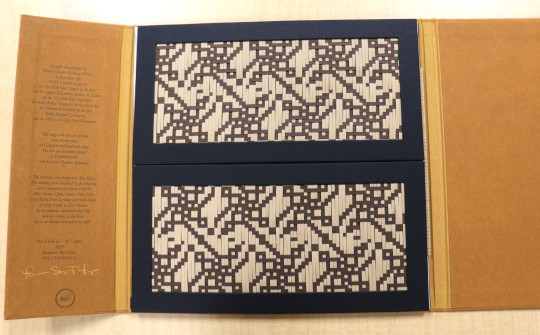
The book can take on multiple forms and shapes, with an accordion pamphlet and movable walls made of woven paper. When fully unfolded and standing up, the book resembles a basket. It features five poems in English with accents in Cherokee syllabary. The poems are those of remembrance, healing, love, home, and heritage. The cover shows an illustration of the artist’s grandmother, and the title is printed in both English and Cherokee.


The piece draws on traditional Cherokee weaving techniques used for river-cane basket making, but with the artists own contemporary weaving design. Instead of white oak and rivercane, she uses handmade paper. In her artist’s statement, Tafoya explains that the weaving design “represents the energy of my indigenous lineage as well as the urge to break out of boxes that a colonized society puts my identity, culture, and art into.”
The book was made in honor of the artists maternal grandmother, Martha Reed-Bark, who was a Cherokee medicine-woman and basket weaver. The title Ul'nigid’, which translates to “strong,” embodies her resilience and spirit.


From the publisher: “Ul’nigid’ is a demonstration of love and remembrance, wherein each technical process portrays strength and delicacy, allowing the artist to communicate a contemporary indigenous voice with deep influences from her traditional grandmother.”

Rhiannon Skye Tafoya is a printmaker, weaver, digital designer, and book artist affiliated with the Eastern Band Cherokee and Santa Clara Pueblo tribes. She earned her Master of Fine Arts in print media from Pacific Northwest College of Art in Portland, Oregon, and her Bachelor of Fine Arts in printmaking and sculpture from the Institute of American Indian Arts in Santa Fe, New Mexico. In her work, Tafoya seeks to share and preserve personal and familial stories, cultural knowledge, and the Cherokee language, while still paving her own journey through contemporary art.

Explore more artists’ books on InfoHawk+, the Book Arts Research Database, or visit us in person.
-Anne M, Olson Graduate Research Assistant
#voicesfromthestacks#artists books#native american#libraries#uiowa#rare books#fiber arts#Rhiannon Skye Tafoya
81 notes
·
View notes
Text

New Mexican (newspaper) building on the Northwest corner of the Plaza, Santa Fe, New Mexico
Date: 1899 Negative Number: 010724
65 notes
·
View notes
Text

Food For Fraught http://Newsday.com/matt
* * * *
LETTERS FROM AN AMERICAN
March 31, 2025
Heather Cox Richardson
Apr 01, 2025
On April 1, 1861, Secretary of State William Henry Seward wrote an astonishing letter to President Abraham Lincoln. Less than a month after Lincoln had taken office, Seward had little faith in the apparently uneducated president from the raw West and was angry that the Cabinet had overruled him to provision South Carolina’s Fort Sumter rather than evacuating it. Seward was convinced that he, rather than Lincoln, should lead the administration.
Seward complained that Lincoln had not yet established “a policy either domestic or foreign” and said he had figured out the solution to the nation’s political crisis, in which seven states—South Carolina, Mississippi, Florida, Alabama, Georgia, Louisiana, and Texas—had seceded from the Union in the weeks after Lincoln was elected president but before he took office. “[W]e must,” Seward wrote, “Change the question before the Public from one upon Slavery, or about Slavery for a question upon Union or Disunion.”
The way to do that, he wrote, was to rally Americans around the flag. To do so, he told Lincoln, “I would demand explanations from Spain and France, categorically, at once. I would seek explanations from Great Britain and Russia, and send agents into Canada, Mexico and Central America, to rouse a vigorous continental spirit of independence on this continent against European intervention. And if satisfactory explanations are not received from Spain and France, Would convene Congress and declare war against them.”
Modestly, Seward concluded: “Either the President must do it himself…or Devolve it upon some member of his Cabinet…. It is not in my especial province. But I neither seek to evade nor assume responsibility.”
In other words, Seward proposed taking charge of the U.S. government from the elected president, and then bringing Americans together by starting a war with Spain, France, Great Britain, or Russia—who was on the other side really didn’t matter. A crisis could be created with any of them. The point was to quell dissent at home by turning Americans against another country.
Lincoln spoke directly to Seward about his letter and then dropped the matter, leaving the secretary of state’s preposterous suggestion on the floor like the lead balloon it was. The two went on to forge a strong relationship, with Lincoln as the head of the administration and without starting a war with another country.
But Seward’s missive demonstrated a historical truism: when one country invades another, it usually reflects the problems of the invader’s domestic politics, no matter what the justification for the invasion is.
Although President Donald Trump never mentioned taking over Greenland—or Canada, or Panama, or Mexico—during the 2024 campaign, he has made such takeovers a key objective of his administration. On March 6, Trump addressed “the incredible people of Greenland” during a joint session of Congress, telling them that the U.S. needs Greenland “for national security and even international security…. And I think we’re going to get it. One way or the other, we’re going to get it.” On March 29, Trump told Kristen Welker of NBC News: “We’ll get Greenland. Yeah, 100%.” He said that there’s a “good possibility that we could do it without military force” but that “I don’t take anything off the table.”
On Friday, Vice President J.D. Vance led a delegation to Greenland, an island of about 56,000 people that is a semiautonomous territory of Denmark. As founding members of both the United Nations in 1945 and the North Atlantic Treaty Organization (NATO) in 1949, Denmark and the United States are allies of long standing. Immediately after World War II, the American military maintained 17 bases and installations in Greenland, with thousands of soldiers, but now it maintains only the Pituffik Space Base on Greenland’s northwest coast with about 200 soldiers. It was there that Vance landed with his wife, as well as disgraced national security advisor Mike Waltz, Secretary of Energy Chris Wright, and Senator Mike Lee (R-UT) on Friday after Greenlanders and Danes opposed a more extended itinerary.
Vance told Denmark it had “underinvested in the people of Greenland, and you have underinvested in the security architecture of this incredible, beautiful landmass filled with incredible people. That has to change.” Danish Prime Minister Mette Fredriksen dismissed Vance’s assertion, saying that Denmark is “a good and strong ally.” Danish foreign minister Løkke Rasmussen noted that a 1951 agreement between the U.S. and Denmark “offers ample opportunity for the United States to have a much stronger military presence in Greenland. If that is what you wish, then let us discuss it.”
Greenland sits between the United States, Europe, and Russia on the Arctic Circle, where melting ice is making the seas more navigable. Climate change also offers access to Greenland’s rare earth minerals that are of strategic importance for modern economies, as well as oil and gas reserves.
The Trump regime wants those resources, but perhaps even more to the point, the U.S. invading another country—any other country, but particularly an ally—demolishes a key founding principle of the post–World War II order: that countries will respect each other’s borders and sovereignty. In seizing Greenland from Denmark, the U.S. would justify Russia’s seizure of Ukrainian territory.
That the United States is even talking about this is bonkers. Leaders from Greenland and Denmark have said the island is not for sale. National security scholar Tom Nichols posted: “The President of the United States just implied he would use force against an ally in an unprovoked war of aggression and conquest—and the entire world is so used to ignoring him like a crazy grandpa in the attic that it’s not the biggest story on the planet.”
A Fox News poll conducted from March 14 to March 17 showed that only 26% of Americans like the idea of taking over Greenland.
Americans also aren’t keen about the regime sweeping up legal U.S. residents in its deportation programs. A CBS News/YouGov survey from March 27–28 showed that 71% of Americans thought it was “not acceptable” for immigration authorities to mistakenly detain legal U.S. residents as part of the regime’s larger deportation program, while only 29% thought it would be acceptable.
And yet, today Nick Miroff of The Atlantic reported that Trump administration attorneys admitted in a court filing that officials from Immigration and Customs Enforcement had seized and deported Kilmar Abrego Garcia by accident. Abrego Garcia fled gang threats in El Salvador when he was 16, and came to the U.S. He has no criminal record, works full time as a union sheet metal apprentice, is married to an American citizen, and is the father of a disabled U.S. citizen. He had been granted legal protected status from return to El Salvador after a judge found he was likely to be targeted by gangs if he was sent back.
The U.S. government did not charge Abrego Garcia with a crime but deported him to El Salvador’s Terrorism Confinement Center (CECOT) because of an administrative error. “This was an oversight,” the government told the court. But, because he is no longer in U.S. custody, the government said it is beyond the reach of U.S. courts to get him back.
Abrego Garcia’s attorney, Simon Sandoval-Moshenberg, told Miroff he had never seen a case where the government ignored protective legal status and deported someone. “They claim that the court is powerless to order any relief,’’ he told Miroff. “If that’s true, the immigration laws are meaningless—all of them—because the government can deport whoever they want, wherever they want, whenever they want, and no court can do anything about it once it’s done.”
Tomorrow, voters will have a chance to weigh in on the government when elections take place in two Florida districts to fill seats vacated by the resignations of Mike Waltz, now national security advisor, and Matt Gaetz. Wisconsin, too, will hold an election, for a ten-year term on the state supreme court. That position will likely determine whether Wisconsin’s congressional maps remain gerrymandered in favor of Republicans, permitting them to pick up more seats than they have earned. Such skewing has made it possible for Republicans to retain control of the House of Representatives, and candidate Susan Crawford is likely to vote in favor of fair maps to replace the gerrymandered ones.
While it is supposed to be a nonpartisan election, President Trump has thrown his weight behind candidate Brad Schimel. Billionaire Elon Musk has thrown his checkbook, putting almost $20 million behind Schimel. On Sunday Musk traveled to Wisconsin, where he said the election could determine “the future of America and Western Civilization,” warning that a court with Crawford on it would redraw the gerrymandered districts and “add seats for Democrats.”
On Sunday, Musk gave away two checks for $1 million each to individuals who attended his rally for Schimel and signed a petition against “activist judges”. Musk got around the Wisconsin law against exchanging an item of value to get someone to vote or not to vote by claiming the checks were for “spokesperson agreements.” But the video recorded by one of the recipients linked her vote to Musk’s check, saying, “I did exactly what Elon Musk told everyone to do: sign the petition, refer friends and family, vote, and now I have a million dollars.”
The other check for a million dollars went to the chair of the Wisconsin College Republicans, who has worked for Republican campaigns.
“Let me talk for a minute or two about my opponent, Elon Musk,” Crawford told supporters on Monday. She announced her candidacy for the race before Trump was elected, and according to Scott Bauer of the Associated Press, she said she never imagined she would be fighting against “the richest man in the world.”
Wisconsin Democratic Party chair Ben Wikler said he thought “people do not want to see Elon Musk buying election after election after election. If it works here, he’s going to do it all over the country.”
Meanwhile Senator Cory Booker (D-NJ) has been speaking on the floor of the Senate since 7:00 tonight because, he said, “I believe sincerely that our country is in crisis.” “These are not normal times in America. And they should not be treated as such in the United States Senate.”
LETTERS FROM AN AMERICAN
HEATHER COX RICHARDSON
#Food for Fraught#Matt Davies#William Henry Seward#Abraham Lincoln#American History#Greenland#distraction#Cory Booker#not normal#Musk#illegal actions#lawlessness#rule of law#illegal deportations
24 notes
·
View notes
Photo

Canyon de Chelly
Canyon de Chelly or Canyon de Chelly National Monument is a protected site that contains the remains of 5,000 years of Native American inhabitation. Canyon de Chelly is located in the northeastern portion of the US state of Arizona within the Navajo Nation and not too far from the border with neighboring New Mexico. It is located 472 km (293 miles) northwest of Phoenix, Arizona. Canyon de Chelly is unique in the United States as it preserves the ruins and rock art of indigenous peoples that lived in the region for centuries - the Ancestral Puebloans and the Navajo. Canyon de Chelly has been recognized as a US National Monument since 1931 CE, and it is one of the most visited National Monuments in the United States today.
Geography & Prehistory
The etymology of Canyon de Chelly's name is unusual in the U.S. Southwest as it initially appears to resemble French rather than the more ubiquitous Spanish. "Chelly" is actually derived from the Navajo word tseg, which means "rock canyon" or "in a canyon." Spanish explorers and government officials began to utilize a "Chelly,” “Chegui,” and even "Chelle" in order to try to replicate the Navajo word in the early 1800s CE, which eventually was standardized to “de Chelly” by the middle of the 19th century CE.
Canyon de Chelly lies very close to Chinle, Arizona, and it is located between the Ancestral Puebloan ruins of Betakin and Kiet Siel in the west and the grand structures of Chaco Canyon in New Mexico in the east. Canyon de Chelly, as a National Monument, covers 83,840 acres (339.3 km2; 131.0 sq miles) of land that is currently owned by the Navajo tribe. Spectacularly situated on the Colorado Plateau near the Four Corner's Region, Canyon de Chelly sits at an elevation of over 1829 m (6,000 ft) and bisects the Defiance Plateau in eastern Arizona. The tributaries of the Chinle Creek, which runs through Canyon de Chelly and originates in the Chuska Mountains, have carved the rock and landscape for thousands of years, creating red cliffs that rise up an additional 305 m (1000 ft). The National Monument extends into the canyons of de Chelly, del Muerto, and Monument.
Canyon de Chelly is one of the longest continuously inhabited places anywhere in North America, and archaeologists believe that human settlement in the canyon dates back some 5,000 years. Ancient prehistoric tribes and peoples utilized the canyon while hunting and migrating seasonally, but they did not construct permanent settlements within the canyon. Nonetheless, these prehistoric peoples did leave etchings on stones and on canyon walls throughout what is now Canyon de Chelly. Around c. 200-100 BCE, peoples following a semi-agricultural and sedentary way of life began to inhabit the canyon. (Archaeologists refer to these peoples as "Basketmakers." They are considered the ancestors to the Ancestral Puebloan Peoples.) While they still hunted and gathered like their prehistoric forebears, they also farmed the land where fertile, growing corn, beans, squash, and other small crops. It is also known that they grew cotton for textile production. Yucca and grama grass have grown in the canyon for several millennia, and indigenous people utilized these plants when making baskets, sandals, and various types of mats. Prickly pear cactus (Opuntia cactaceae) and pinyon are also found throughout Canyon de Chelly, the latter of which provided an important source of food for indigenous peoples in autumn and winter. Fish are found in Canyon de Chelly's tributaries, and large and small game frequent the canyon.
Continue reading...
27 notes
·
View notes